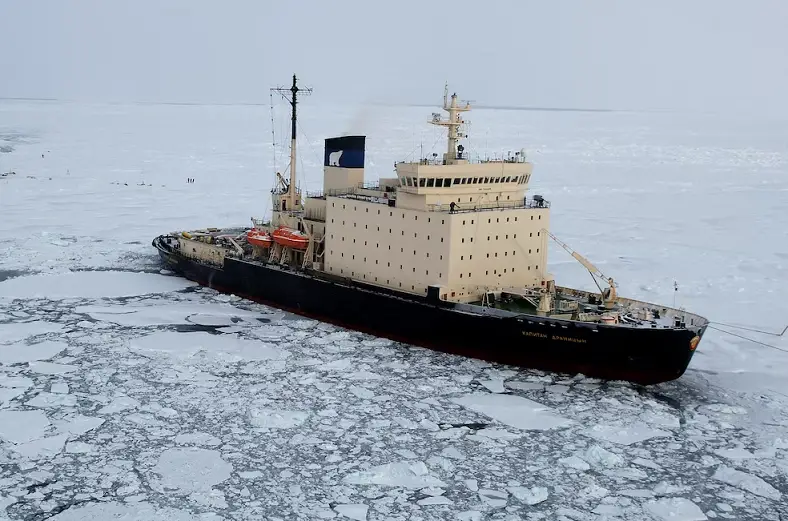The head of Russia’s North Sea Route (NSR) Operator, Sergey Zybko, announced this week that Moscow will begin LNG deliveries to Asia through Russia’s Arctic waterways on a year-round basis.
Zybko, while giving a speech at the “Arctic: Present and Future” forum, said the pilot program will launch next month.
He said, “Starting from January, gas carriers will move under icebreaker support, including during those months when they never sailed before – March, April and May. This will mean year-round navigation.”
Normally, navigation through the eastern part of the NSR only occurs between June and December, when thick ice begins to make transit difficult. During that period, Russian LNG travels to Asia through a longer route, which takes it through the Suez Canal, and the Strait of Malacca. The longer route can take up to 45 days, compared to the 36 days it takes via the North Sea Route.
Analysts said that initially, the program of year-round navigation would likely only involve a small handful of tankers, and it would only comprise a small share of Russia’s total exports, mostly because there are not enough nuclear-powered icebreakers at present to support larger operations. However they noted the pilot program will allow the testing of icebreaker support for gas carriers to access the cost-efficiency, as well as the possibility to have one icebreaker accompany sever tankers. Both factors will determine to cost-feasibility of the program and the final cost of LNG shipments delivered through it.
Asia has imported about 3.84 million tons of Russian oil and gas along the NSR this year. Although LNG supplied has remained mostly unchanged from the previous year, at 2.27 million tons, there was a surge in the deliveries of oil, most of which was delivered to China. Russian oil companies delivered 1.5 million tons of crude oil, equivalent to 14 tankers, along the NSR this year so far, compared to only a single tanker in all of last year
The NSR is a shipping pathway which extends for the entire length of Russia’s Arctic and Far East regions, and which is entirely within Russia’s exclusive economic zone. The route is being used more and more as a major shipping pathway between Europe and Asia. Due to its geography, it dramatically reduces the shipping times compared to traditional pathways, such as through the Suez or Panama canals.
Russia has invested heavily in the development of the NSR over the past eight years, to modernize the ports it uses, and enhance the rail and river transport corridors.
In 2022, the overall freight turnover through the NSR hit 34 million tons, which marked an eightfold increase since 2015. Ongoing initiatives to enhance the infrastructure are projected to increase that number to 80 million tons by 2024.

